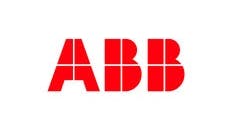With a dark legal cloud lifted from demand response, the resource is likely to find new life on the grid. But what about demand response in microgrids?
Demand response – where a utility or grid operator signals customers to reduce energy use and pays them for doing so – overcame a challenge from power generators with a favorable ruling last month by the U.S. Supreme Court. The decision keeps demand response on equal footing with generation in the market.
Demand response can add economic value to microgrids. It’s one of a stack of revenue streams that microgrid developers use to build favorable project economics. The stack also might include price arbitrage, grid ancillary services, solar incentives, use of heat waste, energy efficiency, reliability and sustainability benefits and other revenue streams or cost avoidances.
So, alone, demand response may not make-or-break a microgrid, but it can help prove a case for the capital investment.
“It is always one of the line items when you stack the business case to make a microgrid pencil out,” said Mark Feasel, vice president of Schneider Electric’s Electric Utility Segment & Smart Grid. “You’re always thinking about it.”
The Supreme Court’s decision – which upheld what’s known as the Federal Energy Regulatory Commission (FERC) Order 745 – heightened confidence about use of demand response as part of the long-term business case.
“It solidified in the minds of end users that demand response is here to stay,” Feasel said. “It is viable. I can go ahead and count it and feel pretty good about my ROI calculation.”
Ready to dance, but no partner
But that only works where utilities or grid operators offer demand response programs – or where they are not oversubscribed, according to David Chiesa, senior director of business development at S&C Electric.
“You can sign up for it, but they may not call you very often,” he said.
The kind of customers that microgrids tend to serve — commercial, industrial, institutional or municipal – make up a small portion of demand response participants in the U.S., according to a recent report by the U.S. Energy Information Administration. In fact, of the 9.3 million demand response participants, the greatest number are residential customers, EIA said.
As a result, today’s microgrids aren’t typically accruing a lot of economic value from demand response – at least so far, Chiesa said.
“When you look at the market you see it coming,” he said. “So we have built the functionality into our systems.”
The market is coming because of the value that demand response offers to utilities, he said. By shaving its peak, a utility can avert building expensive power plants that are likely to be used only a few times a year, often on hot days when power plants are working at full tilt.
But those large customers that do participate in demand response, achieve far greater savings in aggregate than do households. They also save more money. The average annual residential demand response payment was $40 in 2014. For a commercial customer, the incentive averaged almost $600, and for the industrial customer $9,000, according to EIA.
Peak Shaving
As with all things energy, much depends on definition. In the strictest sense, demand response refers to a signal sent to customers by grid operators or utilities to reduce power demand in return for payment.
If you broaden the definition of demand response to include peak shaving – “the opposite side of the same coin” — the business proposition grows, Chiesa said. Peak shaving offers a price signal that lets consumers know when it’s to their advantage to avoid consuming energy and therefore avoid higher payment.
“If you take the combination of peak shaving and demand response as one market condition – but different signals – all of a sudden demand response becomes a bigger player in the market,” he said.
In S&C software, demand response and peak shaving are simply two different use cases for the same functionality. About 80 percent of S&C’s installations incorporate this functionality, Chiesa said.
An example is the high-visibility Oncor test microgrid in Texas that S&C Electric worked on with Schneider Electric and several other vendors. Another is a 7-MW energy storage facility in Minster, Ohio, a project with the local municipal utility, the Village of Minster. That energy storage system is capable of offering four unique revenue streams. In addition to peak shaving, they include sales into PJM’s frequency regulation market, deferring transmission and distribution and improving power quality.
What’s ahead
As the energy storage market takes hold, microgrid companies see themselves looking even more closely at innovative demand reduction capabilities.
“At ABB we always look for demand response opportunities in microgrids we work on, whether they are grid embedded or remote,” said Nathan Adams, ABB’s general manager North American microgrids.
For grid-connected microgrids, demand response offers a way for the microgrid owner to participate in local capacity markets or reduce capacity charges, he said. For remote microgrids, demand response can absorb excess renewable energy. Or conversely match load to generation in times of low capacity.
ABB is particularly on the look-out for forms of latent storage that can absorb excess load. These might be ice making, water desalinization, stored thermal heating in ceramic or hydronic form, and even grocery store coolers.
“Because all of these either store thermal energy or store the output of an electrically driven process, they can often be used to reduce consumption during peak times or absorb excess renewable energy in high renewable penetration systems,” he said.
By way of example, ABB oversaw a project in Antarctica where the company stored excess wind energy in a large central water heater.
“There was always a need for heated water there so it worked great as a storage device when wind output was higher than facility demand,” he said.
So the Supreme Court decision kept the door open for more demand response in microgrids. But it is clearly just one factor influencing the market. Demand response can improve the business case for microgrids – we just need more of it.
Learn more about the business case for a microgrid by attending the May 19 Microgrid Knowledge conference in Manhattan.









